IATA’s STUDY of Contrails is MOST INSTRUCTIVE
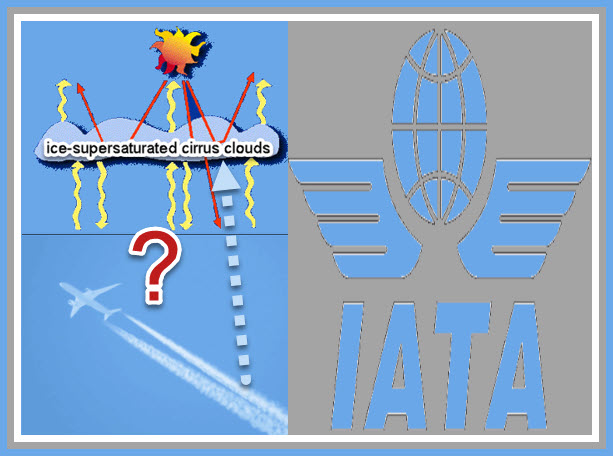
Environmentalists, for whatever reason, have designated AVIATION, to be their global poster polluter. The efforts which airframe and powerplant manufacturers, Sustainable Aviation Fuel Technology innovators, airlines and governments have expended in research and development have not impressed the GREENS. That focus has largely been devoted to CO2 emissions.
Another potential environmental concern is the meteorological phenomena called CONTRAILS– visible condensation of water droplets or ice crystals in the atmosphere. They occur in the wake of an aircraft, rocket, or missile under certain conditions. . Persistent contrails, formed in ice-supersaturated regions, can transform into cirrus clouds which reflect incoming solar radiation (during the day) as well as trap outgoing heat. On balance, it is understood that they have a warming effect on the climate, with diurnal, seasonal and geographical variations. However, despite extensive studies, significant uncertainties exist in predicting individual contrail formation, and their climate impact.
WHAT IS AVIATION DOING TO REMEDY CONTRAILS BEFORE THEY BECOME THE NEXT ISSUE?
The FAA/NASA, EPA, EASA, and ICAO (2020) have studied the CONTRAIL phenomena. Their papers list more questions than answers; all clearly admit that research is urgently needed. Given their collectively limited knowledge, there are no recommendations among their statements.
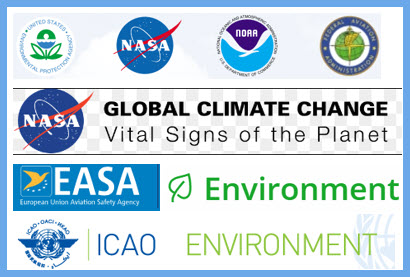
In a very instructive and useful 35 page report IATA examines what exactly contrails are, how they MAY be formed, and what research is needed to address this POTENTIAL contributor to impacts on climate. Based on the airline association’s research and analysis, its Report concludes:
- “PRIORITIZING THE REDUCTION OF CO2 EMISSIONS SHOULD TAKE PRECEDENCE OVER UNCERTAINTIES IN CONTRAIL DETECTION AND CLIMATE IMPACT”
- “THIS REPORT ADDRESSES THE URGENT NEED TO FURTHER UNDERSTAND AND MITIGATE THE FORMATION OF PERSISTENT WARMING CONTRAILS.”
The in-depth study by this airline trade organization is worthy of a careful reading. Below, there is an excerpted version of ICAO’s work. What is striking is Section 2.2.4 CONTRAIL AVOIDANCE: LESSONS LEARNED FROM AIRLINE TRIALS in which the results of several airlines’ avoidance tactics are reported. These trails have contributed to the scientific understanding of CONTRAILs as well as examples of HOW FLIGHTS MIGHT MINIMIZE THEIR SEEDING OF ICE-SUPERSATURATED CIRRUS CLOUDS. These strategies are not yet proven but are promising.
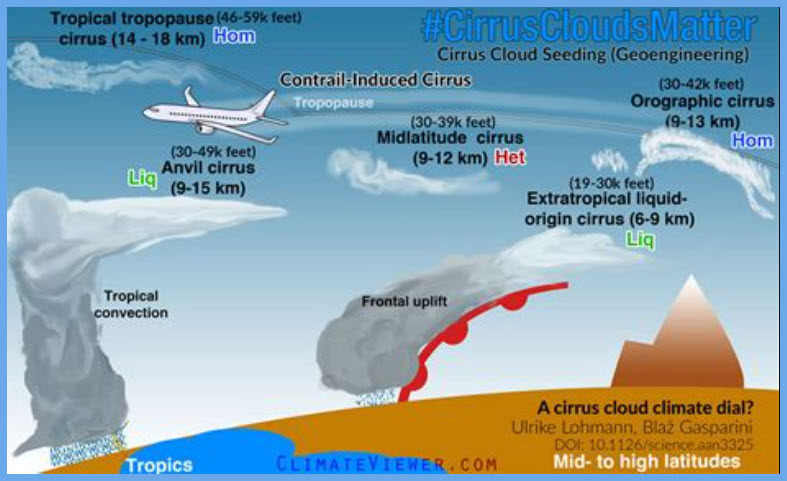
+++++++++++++++++
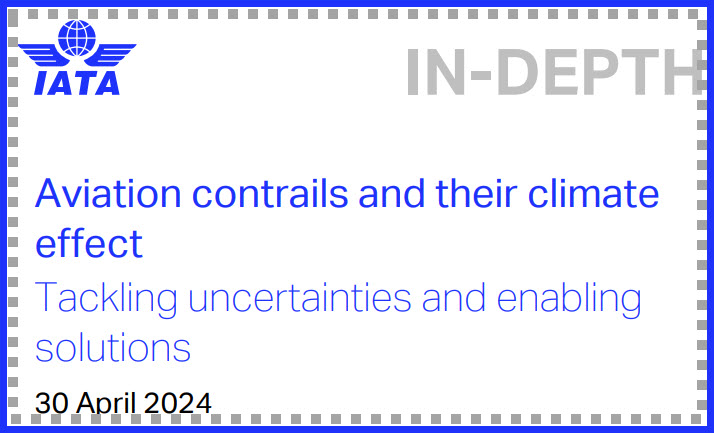
Aviation’s impact on climate extends beyond CO2 emissions, with non-CO2 effects such as contrails and nitrogen oxides (NOx) contributing to global warming. Persistent contrails, formed in ice-supersaturated regions, can transform into cirrus clouds which reflect incoming solar radiation (during the day) as well as trap outgoing heat.
On balance, it is understood that they have a warming effect on the climate, with diurnal, seasonal and geographical variations. However, despite extensive studies, significant uncertainties exist in predicting individual contrail formation, and their climate impact.
The aviation community, formed by INDUSTRY (AIRLINES, MANUFACTURERS, AIR NAVIGATION PROVIDERS), GOVERNMENTS, UNIVERSITIES, AND RESEARCH INSTITUTIONS are actively researching ways to minimize the warming impacts of contrails. THIS REPORT ADDRESSES THE URGENT NEED TO FURTHER UNDERSTAND AND MITIGATE THE FORMATION OF PERSISTENT WARMING CONTRAILS.
Strengthening the synergy between research, technological innovation and enabling policy frameworks will be crucial in reducing aviation’s climate footprint effectively.
The report first explains contrails and the regions in the atmosphere where they form.
Then, initiatives looking at reducing contrail formation are highlighted along with the existing limitations. The use of humidity sensors on a limited population of aircraft is then explored as a potential enabling lever to tackle some of the existing scientific uncertainty gaps by improving and validating numerical weather prediction models.
…
RECOMMENDATIONS
The report advocates for short, medium and long-term approaches to tackling the climate effect of contrails.
▪ In the immediate term (2024-2030), PRIORITIZING THE REDUCTION OF CO2 EMISSIONS SHOULD TAKE PRECEDENCE OVER UNCERTAINTIES IN CONTRAIL DETECTION AND CLIMATE IMPACT
. Actions now include:
‒ increasing airline participation in sensor programs;
‒ continuing scientific research;
and
‒ improving humidity and climate models.
▪ Mid-term actions (2030-2040) involve:
‒ establishing standards for data transmission;
‒ continuous validation of models;
and
‒ encouraging aircraft manufacturers to include provisions for meteorological observations.
▪ Longer-term actions (2040-2050) focus on increasing the world fleet providing data and having a full understanding of the non-CO2 effects of alternative fuels. These action items collectively aim to mitigate the climate impact of aviation while advancing scientific understanding and technological capabilities.
The industry and its stakeholders are working to tackle non-CO2 emissions. It is clear that significant progress has been made in understanding non-CO2 impacts of aviation, however considerable work remains. In the short term, this means developing more experimentation, raising awareness and increasing understanding around non-CO2 emissions. Based on these learnings, design and operational decisions will need to be taken.
Strengthening the synergy between technological innovation and regulatory frameworks will be crucial in reducing aviation’s climate footprint effectively. Due to current limitations in measuring the impact of individual contrails, Monitoring Reporting and Verification (MRV) schemes for non-CO2 emissions today, will be incomplete and unlikely to represent reality or result in a reduction of aviation’s climate impact. INSTEAD, ALL STAKEHOLDERS MUST WORK TOGETHER TO RESOLVE CURRENT GAPS IN THE SCIENCE SO EFFECTIVE ACTION CAN BE PROGRESSED FOR AVIATION.
…
2. CONTRAILS AND ISSR
2.1. Contrails explained

2.2. The climate impact of contrails

2.2.1 Current approaches to mitigate the warming impact of contrails
2.2.2 ISSR and persistent contrails characterization
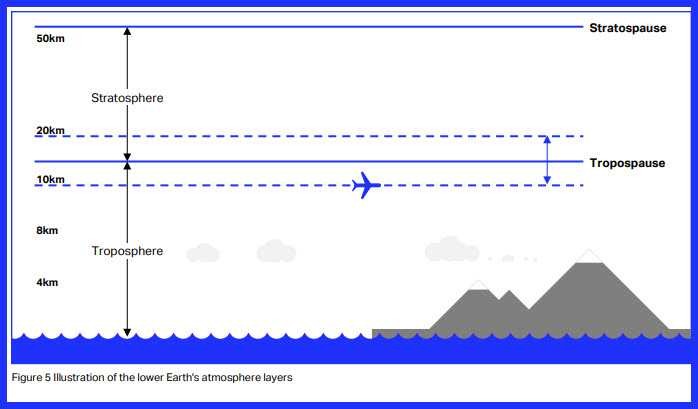
Location
Size
Lifetimes
Humidity and temperature inside an ISSR
2.2.3 Contrails characterization
2.2.4 CONTRAIL AVOIDANCE: LESSONS LEARNED FROM AIRLINE TRIALS
Airlines are taking a lead with investigating non-CO2 emissions through different means. United Airlines, for example, in partnership with Boeing ecoDemonstrator, NASA, GE Aerospace and DLR have conducted trials involving understanding the non-CO2 effects of Sustainable Aviation Fuels (SAF) and lean combustors. Swiss International Air Lines has been working on increasing their understanding on Nitrogen Oxides emissions, and Virgin Atlantic Airways recently conducted a commercial transatlantic flight on 100% SAF which involved a thorough emission campaign prior to the actual flight where important data on engine emissions with 100% SAF were collected. Some airlines have also conducted (or are preparing) trials to learn how feasible it would be to avoid ISSRs where contrails can persist. For example:
▪ American Airlines in partnership with Google and Breakthrough Energy
▪ Air France in partnership with Météo France
▪ Delta Air Lines in partnership with the MIT
▪ Etihad Airways in partnership with Satavia
▪ KLM Airlines in partnership with Satavia ▪ Lufthansa Airlines, DHL, Condor, TUI in partnership with DLR and DWD (in preparation at the time of writing)
THE METHODOLOGIES USED FOR AVOIDANCE can be broadly grouped into two categories.
One involves using weather data to estimate where ISSRs might be using a contrail formation numerical model, then review the filed flight plan to predict whether the contrail will be formed, and the potential estimated climate impact of that contrail. An alternative flight path is then filed which deviates the flight away from that region usually by vertical changes to the original route
The second methodology involves using satellite imagery to observe a fraction of the sky. Through observations, some contrails might be detected, and their position reported. Following flights are diverted away from this region and the result is observed with satellite imagery.
A third “hybrid” approach is to use weather models to predict where a persistent contrail could be formed, then diverting (or not) an aircraft from that region and use satellite imagery to verify if the prediction was correct or not and if the contrail was avoided. These types of verifications have also been done with observations at ground-level and during flight, by asking volunteers to report contrails that have been spotted and verifying this with predictions. These experiments have provided a valuable platform to evaluate the feasibility of such diversions, and the challenges that are still present. In this report, three challenges are highlighted.
Challenge 1: Accurately predicting the location of Ice Super Saturated Regions
Challenge 2: Accurately estimating the climate impact of single contrails
Challenge 3: Verifying that the diversion has been successful
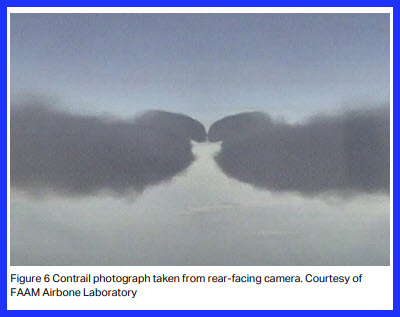

3. Humidity sensors to increase the understanding of contrails
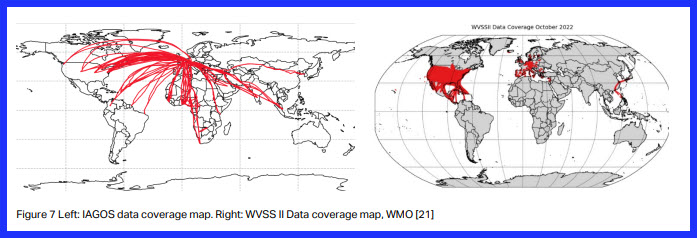

3.2. Number of aircraft required
3.3. Implications on aircraft performance.
3.3.1 Performance penalties due to extra drag
3.3.2 Performance implications due to the sensor’s weight
3.3.3 Power required by the sensors.
4. Data transfer
5. Costs
6. Benefits of water vapor measurements to airlines and to the scientific community
The benefits of aircraft-based weather observations have been extensively reported by the World Meteorological Organization (WMO) [21] [24]. A summary of aircraft-based humidity measurement benefits can also be found in the joint WMO-IATA initiative WICAP (WMO-IATA Collaborative AMDAR Program) [25] [26]. These are summarized here for brevity:
Benefits to airlines
Benefits to scientific and weather community
Increased understanding of non-CO2 emissions for their potential mitigation.
Increased probability of contrail avoidance success. • Reduces environmental risks of incomplete contrail avoidance strategies. •
More humidity readings can improve weather event forecasting at airports for better planning (i.e., fog, thunderstorms). (70% of all delays at high-capacity airports are weather related)
Safer and more accurate route planning to avoid severe weather, as well as optimization of fuel planning and consumption.
Customer perception improved due to taking a leading role in reducing environmental footprint as well as contributing to environmental and climate concerns.
Supplement existing radiosonde network to increase spatial and temporal resolution of upper-atmosphere -> better weather forecasting.
Increased understanding of contrail formation, persistence, and their climate effect.
Increased validation of current contrail prediction models, and models which predict ISSR location, lifetimes, and behaviour. • Improved warnings and forecasts on:
Precipitation type and intensity
Thunderstorms/heavy rain/ flooding events • Low-level wind shear/crosswinds
Low visibility conditions
Icing/frost/fog
Droughts/ wildfire weather
7. Next Steps and Recommendations
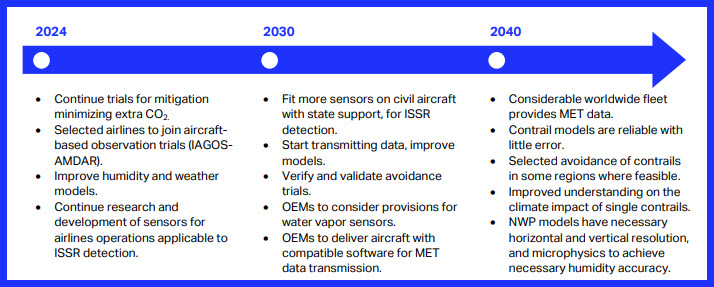
The participants in the IATA study
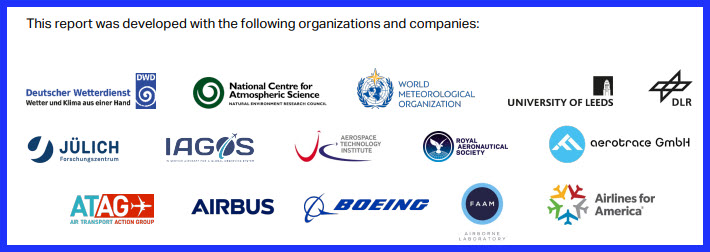
++++++++++++++++++++++++++++